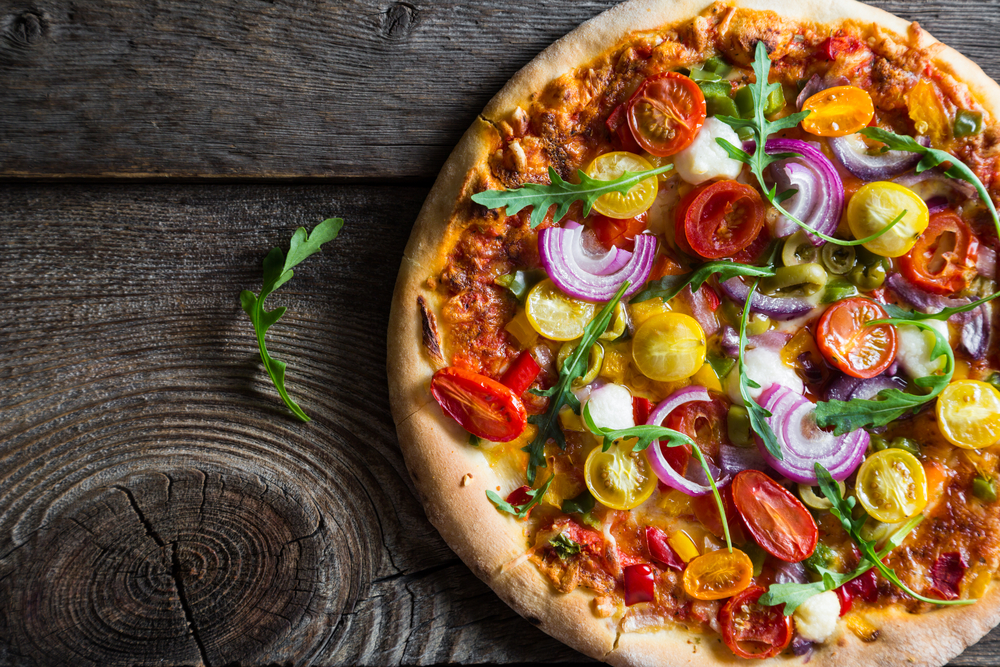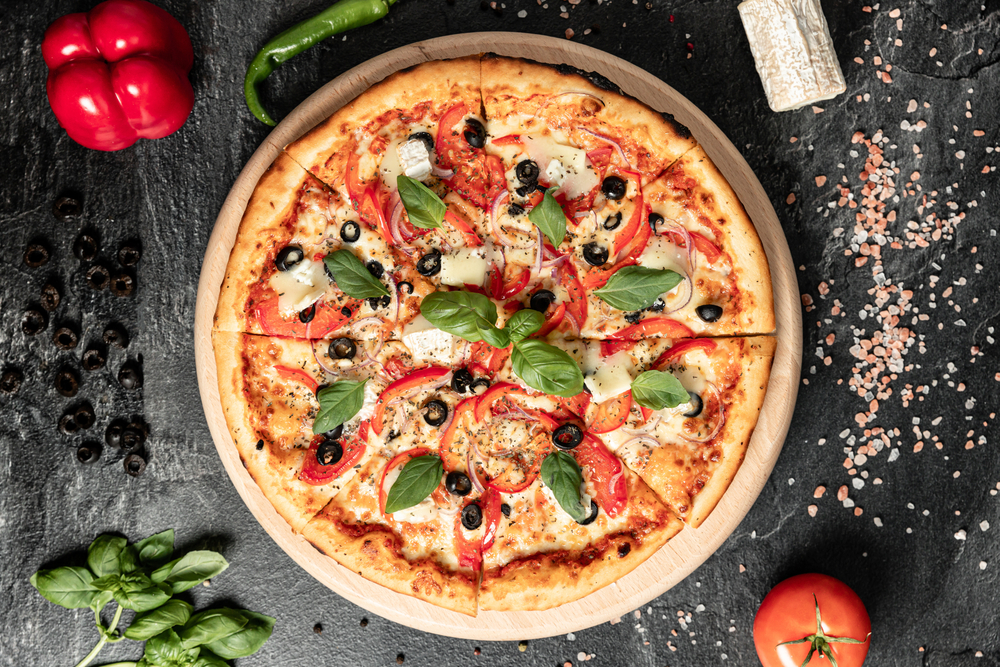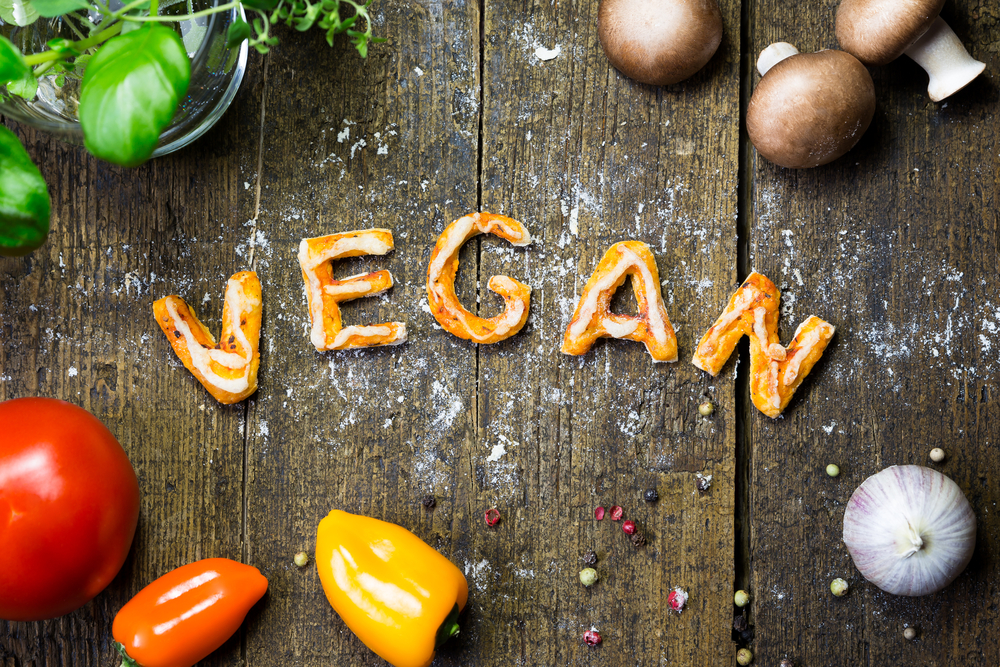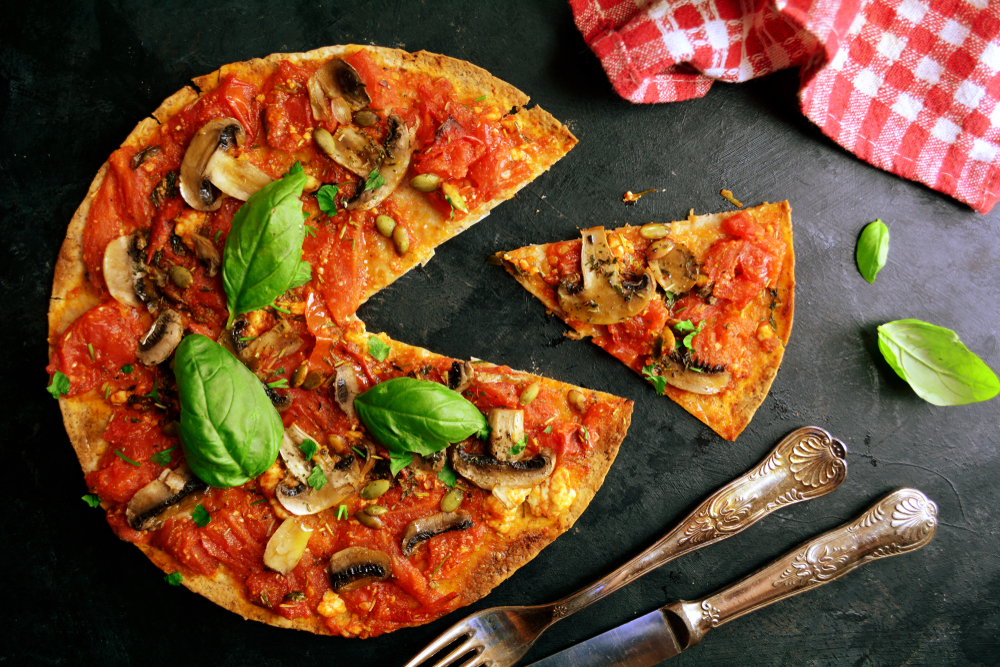Pizzas are usually thought of as high in fat and calories so not the healthiest option on the menu.
National Pizza Day on 9th February, is a great excuse to enjoy eating pizza, as Clinical nutritionist Suzie Sawyer explains how making a few tweaks to their ingredients can make all the difference to their nutritional status.
The history of pizza

It was the Italians who invented pizza, some of the first ones being recorded as far back as the 10th century. Pizza was typically a dish with a base made from leavened wheat-based dough, topped with cheese, tomatoes and various types of sausage, mushrooms anchovies. Indeed, a lot of the same ingredients as we’re using now. It also seems that the ever-popular pizza Margherita was first created in the 1800s for Queen Margherita.
Traditional pizza can be quite high in calories and fat, which is fine for an occasional treat, but it’s not something to put on the menu daily. There are, however, ways we can produce pizza, or choices we can make so that we can enjoy this wonderful dish in a healthier way.
Combine white and wholewheat

The traditional pizza base is generally produced from refined white flour, which has lost many of its vitamins and minerals in the refining process. However, if you combine white flour and wholewheat flour, then you’ll be getting more nutrients and those all-important energising B-vitamins. It’s also possible to use mozzarella cheese but torn into pieces to reduce the amount.
Replace high-fat meat with vegetables

Another idea is to ditch the high fat sausage or salami meat and use healthy vegetable alternatives such as olives, courgettes, cherry tomatoes, and garlic instead. Importantly, don’t ditch the tomato puree or paste because the antioxidants in tomatoes are better absorbed when cooked.
Add more herbs

Additionally, all of nature’s wonderful herbs provide great health benefits. Oregano, which is traditionally used on a pizza Margherita, is great for the digestive and immune systems. Basil provides antioxidants and Vitamin K which helps support healthy bones.
Going gluten-free

Many of us are not able to eat any foods or have to limit foods containing gluten. Gluten is the protein found in wheat, rye, barley and, to a lesser extent, oats. However, gluten tends to be ‘sticky’ which can disrupt digestion and cause bloating. Gluten foods also contain nitrates which can affect absorption of essential minerals, so it can be beneficial to either reduce or avoid it completely.
So, what becomes of a pizza when there’s no gluten base? You simply use gluten-free flour and some gluten-free baking powder.
Go for sour dough

Many people with a sensitive digestion seem to have problems with traditional wheat-based foods but can tolerate those made with sourdough. Sourdough is lower in gluten but importantly, it undergoes a fermentation process, using the same starter microbes that our found in our gut. These then break down some of the carbohydrates and proteins in the flour which also makes it easier to digest.
Vegan cheese alternatives

If you’re vegan, you may not want to miss out on a delicious pizza. With the rise in veganism, there’s no shortage of vegan cheeses which are made using various vegetable proteins such as soy or nuts, and oils such as coconut. One brand of vegan mozzarella uses brown rice and coconut oil. Additionally, some cheeses include nutritional yeasts, which are a great source of protein for vegans, as well as other nutrients such as B-vitamins, essential for energy production and hundreds of enzyme reactions within the body.
Cutting down the carbs

If you are cutting back on the carbs, try using seeded wraps, topped with tomato puree, red peppers, rocket, parsley, onion, and cheese, and bake in the oven. For an additional protein boost, add some chopped boiled egg when you take it out of the oven.
Whatever your dietary preferences, there are many ways to enjoy pizza healthily!
























Add comment